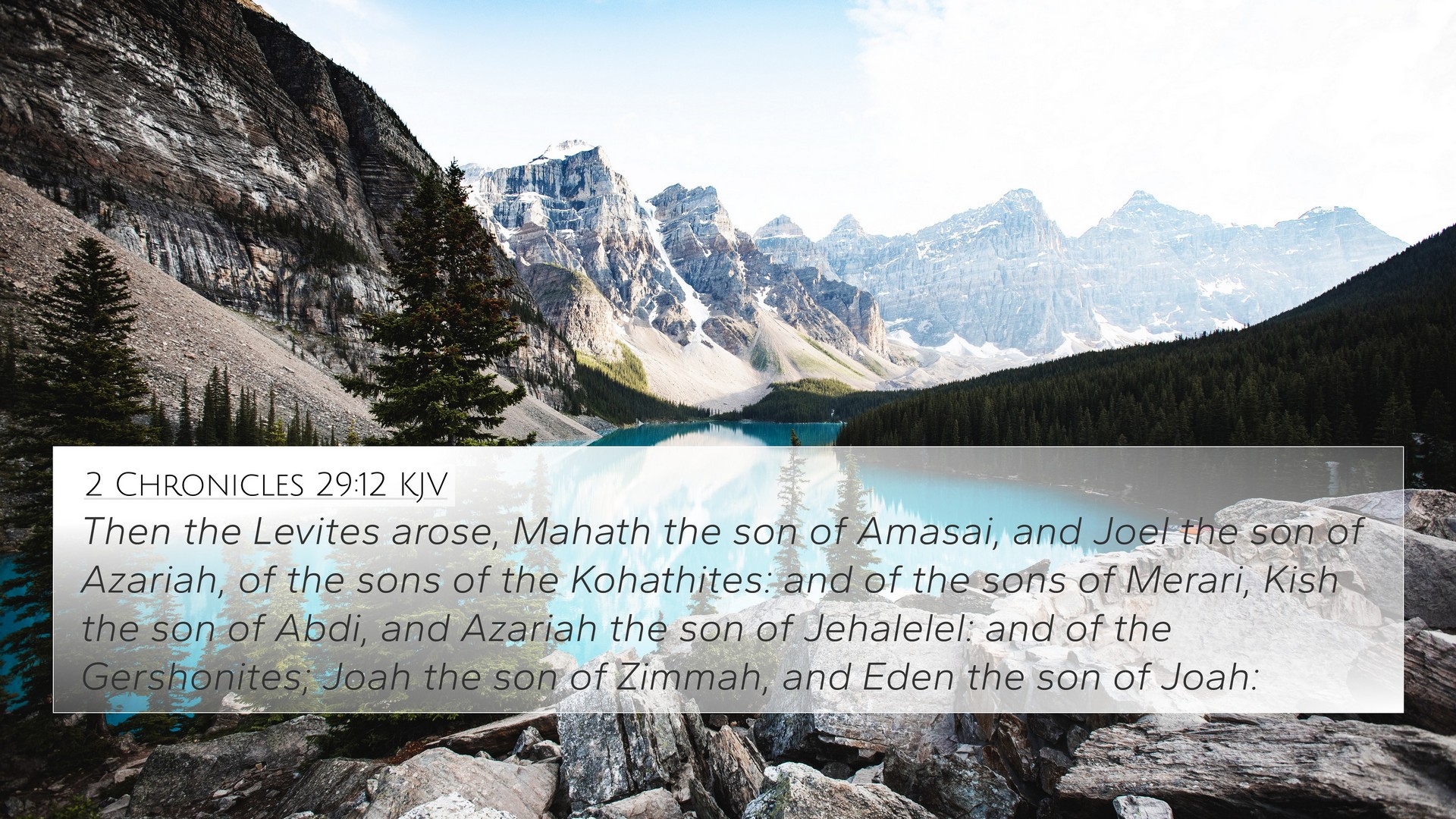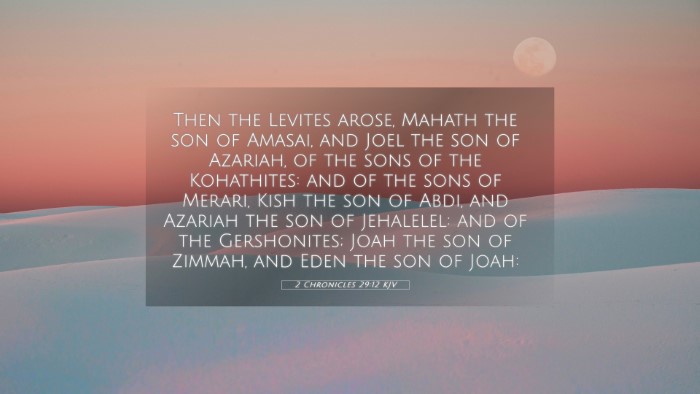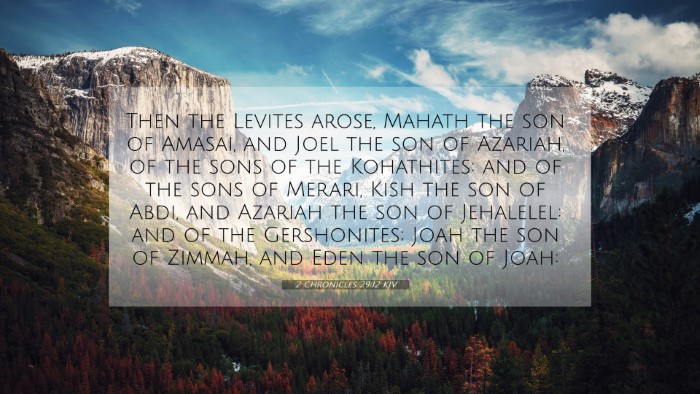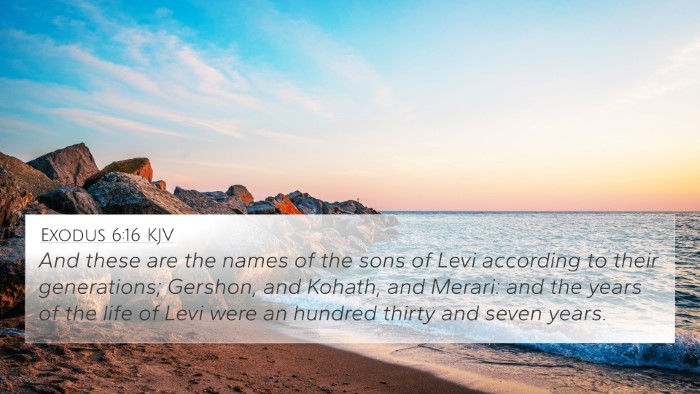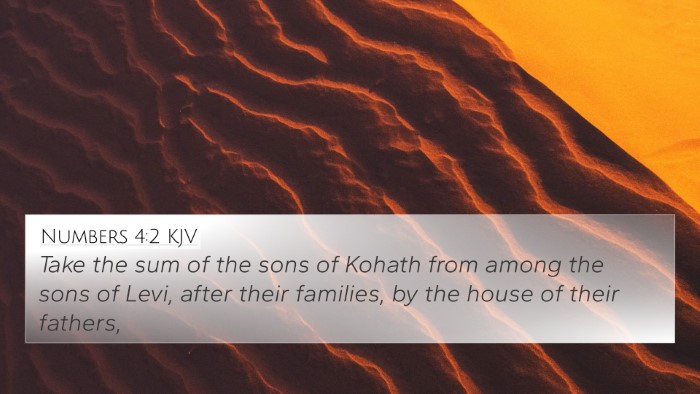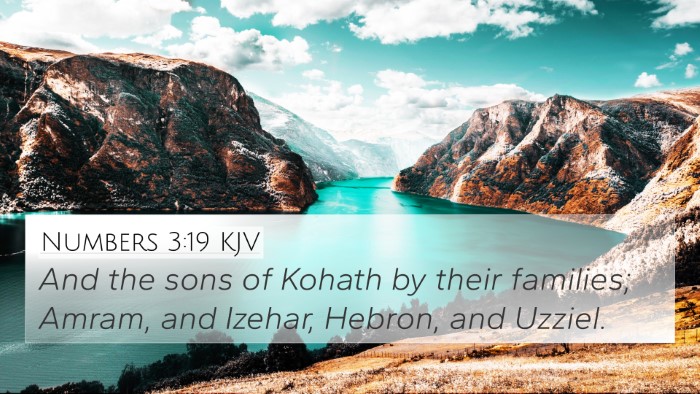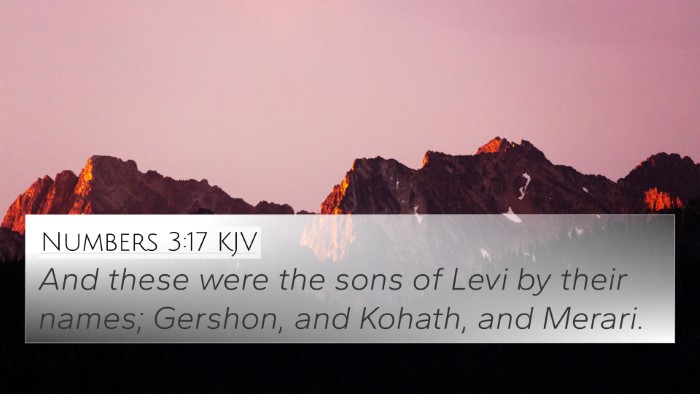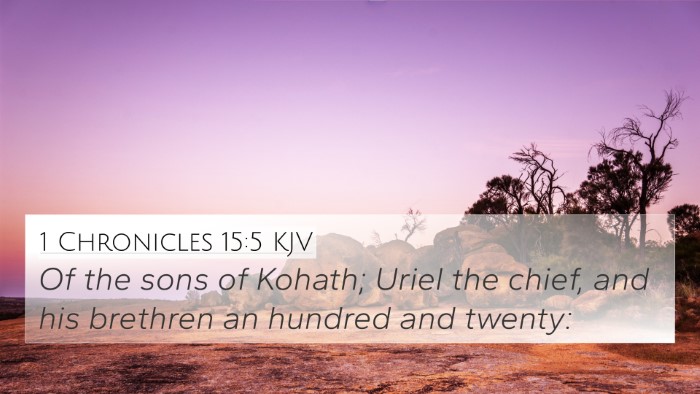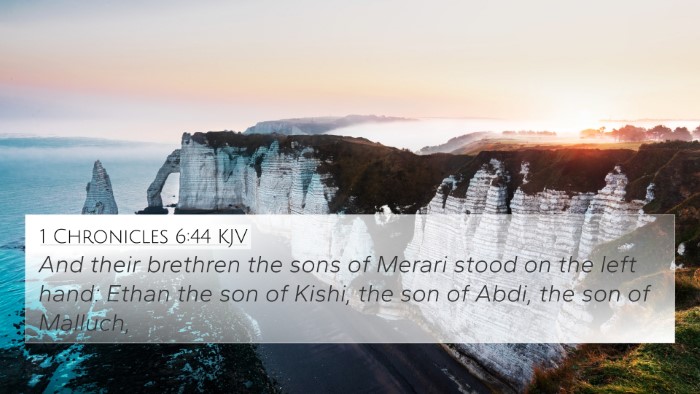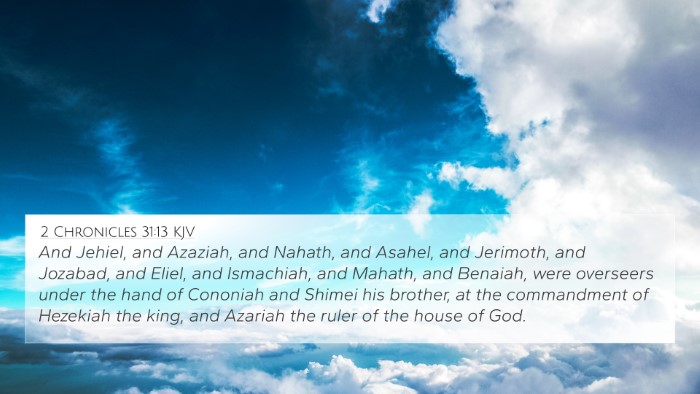Understanding 2 Chronicles 29:12
Verse: 2 Chronicles 29:12 - "Then the Levites arose, Mahath the son of Amasai, and Joel the son of Azariah, of the sons of the Kohathites; and of the sons of Merari, Kish the son of Abdi; and Azariah the son of Jehallelel."
Summary: This verse introduces key Levite figures involved in the restoration of temple worship under King Hezekiah. It emphasizes the participation of the Levites and highlights their roles in serving the Lord in a critical time for the nation of Judah.
Contextual Analysis
The context of this passage is significant as Hezekiah initiates reforms aimed at purifying worship practices that had strayed from God’s commandments. The mention of the Levites stresses their importance in temple duties and the restoration process, illustrating a return to true worship.
Commentary Insights
- Matthew Henry's Commentary: Henry remarks on the essential role of the Levites in carrying out the reforms. Their readiness to serve indicates a renewal of commitment to God’s service and the restoration of the temple's sanctity. The names mentioned symbolize the continuity of the priestly line and the faithfulness of those who ministered in the house of the Lord.
- Albert Barnes' Notes: Barnes points out that naming specific individuals underlines the importance of collective responsibility within the community. Each Levite had a unique role in the service of the temple, illustrating a well-organized system of worship. He notes that this collective action among the priests and Levites signifies a communal return to fidelity to God's covenant.
- Adam Clarke's Commentary: Clarke highlights that Hezekiah’s reforms were not just a top-down initiative but involved the Levites taking up their roles actively and willingly. This underscores the theme of restoration not only in practice but in the individuals' hearts who serve God, showcasing their importance in the covenant community.
Thematic Connections and Cross-References
2 Chronicles 29:12 connects thematically with various verses that address the importance of temple worship, the roles of priests and Levites, and the covenant relationship with God. Here are related cross-references:
- Exodus 28:1: God's command for the consecration of priests.
- Numbers 3:5-10: The appointment of the Levites to assist Aaron and his sons.
- 2 Chronicles 30:1: Hezekiah’s call to the people to keep the Passover, highlighting communal worship.
- Nehemiah 10:39: Emphasizes the Levites’ role in the temple and their provided support.
- 1 Chronicles 15:16: Highlights the organization of the Levites in the service of the Lord.
- Leviticus 10:10-11: The distinctions between holy and common, key to understanding temple worship.
- Psalm 68:35: Acknowledges the majesty of God in strength and service, connecting to the Levites' role.
- Haggai 1:12-14: Reflects the people’s response to God’s call which can be linked to the reforms initiated by Hezekiah.
- Malachi 2:4-7: Discusses the covenant with the Levites and their role in teaching and guarding knowledge.
- Hebrews 7:11-14: Explores the significance of the Levitical priesthood in light of Christ’s priesthood.
Practical Applications
This verse—and its accompanying insights—provides a basis for understanding the significance of commitment to service in the church today. As believers, the call to restore worship and commitment to God remains relevant. The Levites’ actions exemplify the necessity of participation and the acknowledgment of our roles within the body of Christ.
Conclusion
Through the study of 2 Chronicles 29:12, we are reminded of the importance of sacred service and the roles assigned by God throughout Scripture. Inter-Biblical connections offer deeper insight into the ongoing narrative of faithfulness to God’s commandments, inviting us to actively engage in our spiritual responsibilities.
